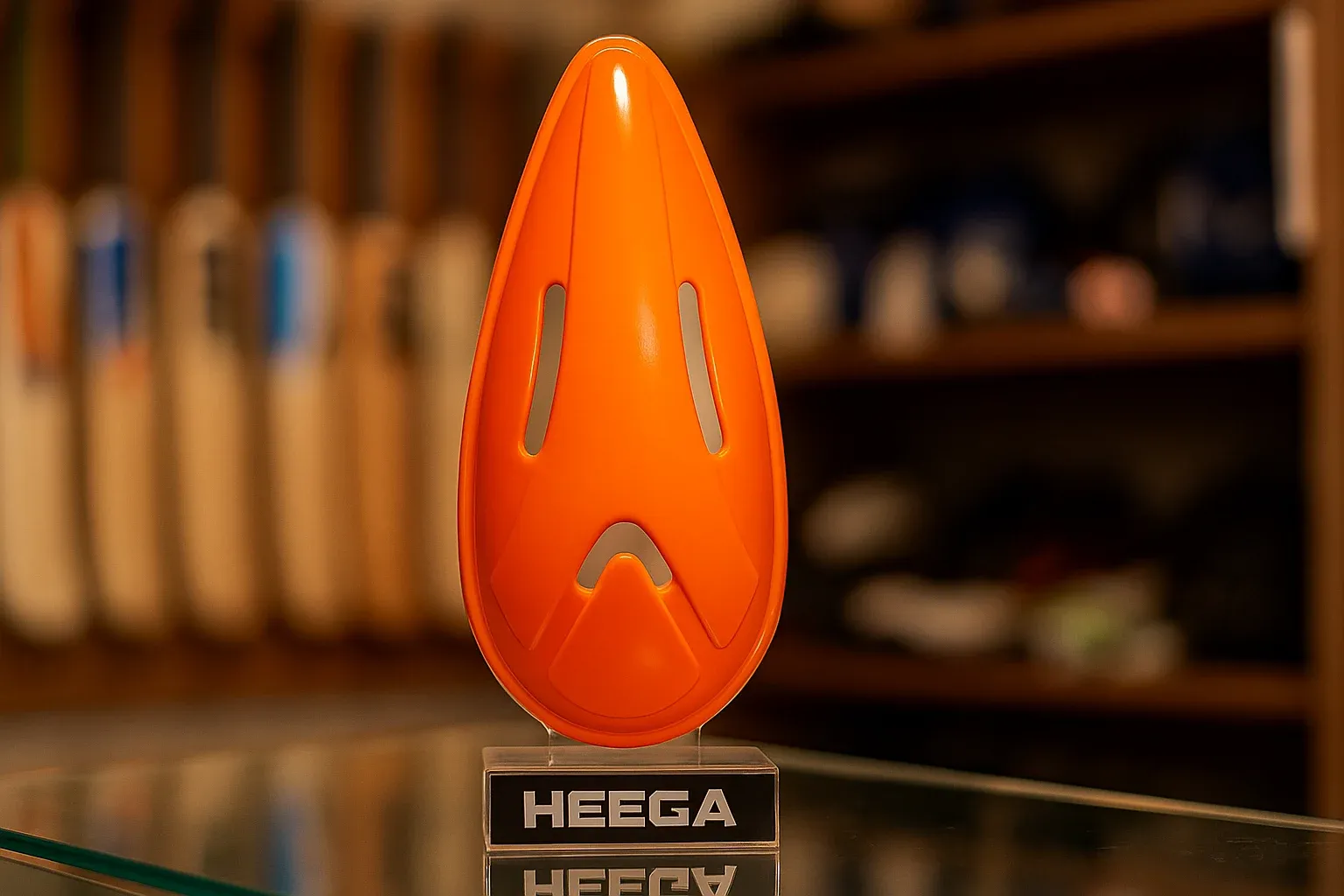
When people talk about cricket equipment, the focus is usually on bats, balls, helmets, gloves, and pads. But tucked away, hidden from view, lies one of the most important pieces of protection: the abdominal guard (commonly called the “box” or “cup”).
It may not be glamorous, but this small item has saved countless cricketers from painful blows and serious medical injuries. Whether you’re a batter facing a 140 km/h bouncer, a wicketkeeper crouching behind the stumps, or even a close-in fielder, the abdominal guard is essential.
But what exactly makes an abdominal guard effective? Let’s break down its anatomy, materials, design innovations, and role in cricket safety.
The Purpose of an Abdominal Guard
At its core, the abdominal guard exists for one simple reason: to protect the groin area from impact.
- Cricket balls are hard, weighing between 155.9–163 g.
- They can travel at speeds over 150 km/h.
- A direct strike without protection can cause excruciating pain, bruising, or severe long-term injury.
The abdominal guard absorbs and deflects this impact, ensuring players can focus on their game without worrying about a potentially career-threatening accident.
Basic Structure of an Abdominal Guard
An abdominal guard may look simple, but its design combines engineering and ergonomics. The typical guard has three main parts:
1. Outer Shell
- Usually made from high-impact plastic or polycarbonate.
- Rigid enough to withstand fast-ball impact.
- Curved to deflect the ball away instead of letting it land directly.
2. Inner Padding
- Made of foam, gel, or soft fabric lining.
- Provides cushioning to absorb shock.
- Prevents skin irritation and ensures comfort during long use.
3. Groin Contour Design
- Anatomically shaped to fit snugly without slipping.
- Wide edges ensure stability within jockstraps or briefs.
This combination of hard exterior + soft interior is what makes the abdominal guard reliable.
Key Features That Make an Abdominal Guard Effective
1. Impact Resistance
The primary role is to absorb and redistribute the energy of the ball.
- Polycarbonate and fiber-reinforced plastic are common for their durability.
- Advanced models use Kevlar or carbon fiber composites for professional-grade protection.
2. Ergonomic Fit
A good abdominal guard must:
- Sit securely without shifting.
- Follow the natural body shape.
- Allow free running, bending, and stretching.
3. Ventilation
Older guards often caused sweating and discomfort. Modern designs include:
- Airflow vents for breathability.
- Moisture-wicking inner lining.
4. Lightweight Construction
- Guards must feel light enough that players forget they are wearing them.
- A bulky guard can restrict movement and cause distractions.
5. Stability in Gear
- Worn with jockstraps, compression shorts, or briefs designed to hold the guard in place.
- Prevents awkward slipping or shifting during intense play.
Evolution of the Abdominal Guard
Traditional Designs
- Early guards were simple hard-shell cups.
- Limited padding and ventilation.
- Effective but uncomfortable for long matches.
Modern Innovations
- Dual-layer construction (hard outer + soft gel inner).
- Lightweight composites instead of heavy plastics.
- Shaped edges to prevent chafing.
- Some even use 3D molding for custom fit.
Technology has turned what was once a crude protective tool into an engineered piece of sports equipment.
Types of Abdominal Guards
- Standard Plastic Guard
- Affordable and widely used.
- Suitable for beginners and recreational players.
- Gel-Padded Guard
- Extra cushioning inside.
- Ideal for longer formats of the game.
- Fiber or Carbon Guard
- Premium, ultra-lightweight, and high durability.
- Preferred by professional cricketers.
- Junior Guards
- Smaller, designed for young players.
- Ensures safety from early stages of learning.
How Abdominal Guards Work in Cricket
- Batters: Must wear abdominal guards at all times, especially against pace bowling.
- Wicketkeepers: Often wear guards since they face deliveries directly.
- Close-in Fielders: Short-leg and silly point fielders sometimes use them for protection.
In each case, the guard gives players the confidence to commit fully to their role without fear.
Consequences of Not Wearing One
History has shown painful examples of players who skipped the abdominal guard. Risks include:
- Groin injuries.
- Testicular trauma.
- Long-term medical complications.
- Forced retirements or missed matches.
Simply put: no abdominal guard = unnecessary risk.
Factors to Consider When Buying an Abdominal Guard
- Size: Choose based on age and body build.
- Material: Polycarbonate or composite for durability.
- Padding: Gel or foam for comfort.
- Fit: Must sit securely without restricting movement.
- Compatibility: Works with compression shorts or traditional straps.
Care and Maintenance of Abdominal Guards
- Clean regularly: Wipe with mild soap and water.
- Dry properly: Avoid keeping in damp bags.
- Inspect for cracks: Replace immediately if damaged.
- Hygiene: Use personal guards; avoid sharing.
Heega Sports: Designed for Maximum Protection
At Heega Sports, we know the importance of a reliable abdominal guard. That’s why ours are:
- Made with high-impact resistant shells.
- Lined with soft, moisture-absorbing padding.
- Designed to be lightweight yet durable.
- Available in multiple sizes for juniors and adults.
Our guards are tested for performance—so cricketers at every level can play with confidence and safety.
Conclusion: Small Gear, Big Protection
The abdominal guard may be the least visible cricket gear, but it’s arguably one of the most important. What makes it effective is:
- Strong outer shell to deflect impact.
- Soft padding for comfort and shock absorption.
- Ergonomic design to stay in place.
- Ventilation and lightweight build for long matches.
If you’re serious about your game—and your safety—never step onto the field without a reliable abdominal guard.
👉 Shop Now – Get Heega Abdominal Guards for Complete Protection